Medical Disclaimer: The information in this article is meant for educational purposes only and is not intended to replace a healthcare provider’s medical advice, diagnosis, or treatment. The FDA does not approve the use of veterinary medications in humans, and may not be safe. Consult a healthcare practitioner before taking any new medications.
An excellent first step to fighting cancer is prioritizing your body’s health. Adjusting sleep habits, diet, exercise activity, and your medications or supplements are all part of your journey to better health. One approach is to incorporate natural substances into your anticancer plan. Scientific studies have demonstrated that certain natural substances and off-label uses of prescription medications have anticancer properties.
Cancer is a devastating disease that affects millions of people worldwide. Traditional treatments, such as chemotherapy and radiation, can have serious side effects and may not be effective for all types of cancer. As a result, researchers are constantly searching for new approaches to combat this disease.
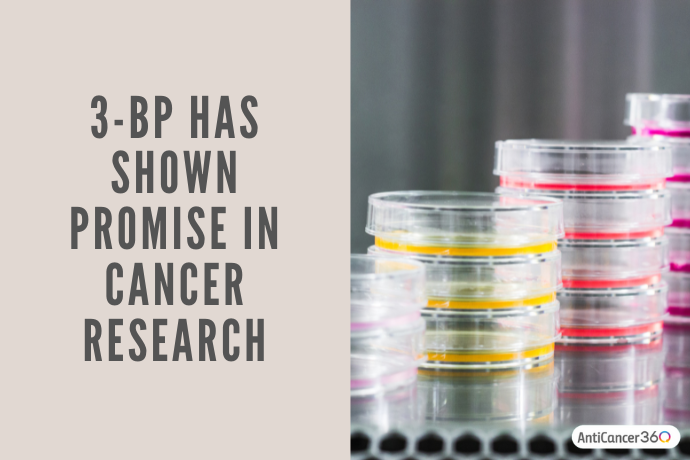
Cancer research constantly evolves, with scientists working tirelessly to discover new treatments and therapies. One compound that has garnered attention in recent years is 3-bromopyruvate (3-BP). But what exactly is it, and what potential benefits does it hold for cancer research?
3-bromopyruvate is a compound that has shown promise in cancer research. Initially developed for other purposes, it has gained attention due to its potential ability to target cancer cells specifically while leaving healthy cells unharmed. In recent studies, 3-bromopyruvate has demonstrated impressive anti-cancer effects, increasing excitement among scientists and clinicians alike.
This article will delve into the fascinating world of 3-bromopyruvate and explore its potential benefits in cancer research. We will examine this compound’s mechanism of action, discuss the results of recent studies, and highlight the possible implications of its use in treating various types of cancer. So, if you’re curious about the latest advancements in cancer research and the potential of 3-bromopyruvate, keep reading to uncover this compound’s exciting possibilities.
What is 3-bromopyruvate?
Cancer research has long been a priority in medicine as scientists and doctors strive to find effective treatments and improve patient outcomes. In recent years, a compound called 3-Bromopyruvate (3-BP) has emerged as a potential game-changer in the fight against cancer.

First, let’s understand what 3-BP is. It is a small molecule inhibitor that targets the energy-producing pathways in cancer cells. Traditional cancer treatments often target rapidly dividing cells, which can lead to adverse side effects for patients. 3-BP, on the other hand, specifically targets the energy metabolism of cancer cells, making it a promising alternative.
Normal, healthy tissue derives its energy, ATP, from oxidative phosphorylation within the mitochondria. Cancer cells, however, typically rely on glycolysis, also known as the Warburg effect or aerobic glycolysis, to generate energy. This metabolic rewiring gives cancer cells a growth advantage by enabling them to produce energy and biomolecules necessary for rapid cell proliferation. The preference for aerobic glycolysis in cancer cells is driven by various molecular mechanisms, including genetic alterations, activation of signaling pathways, and alterations in enzyme expression and activity [1].

One of 3-BP’s key benefits is its ability to induce apoptosis, or programmed cell death, in cancer cells. Cancer cells often exhibit a high rate of glycolysis, which allows them to generate energy even in oxygen-deprived environments. 3-BP disrupts this glycolytic pathway, leading to energy depletion and ultimately triggering cell death in cancer cells. This targeted approach minimizes damage to healthy cells, reducing potential patient side effects.
Potential Anticancer Effects of 3-bromopyruvate
Clinical oncology applications of 3-BP are actively being investigated. Research is focused on understanding its mechanism of action, optimizing its delivery, and exploring its synergistic potential with other chemotherapeutic agents. These studies aim to translate the encouraging preclinical results into effective therapeutic strategies for cancer patients.
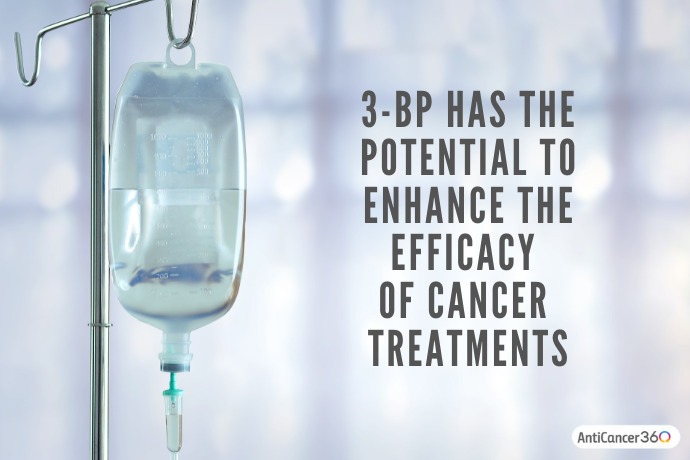
3-BP has shown effectiveness across a wide range of cancer types, including breast, lung, liver, and colon cancer. This versatility makes it a promising candidate for future therapies that could apply to various cancer diagnoses.
Let’s take a look at the specific ways 3-BP affects cancer.
Metabolic Anticancer Effects of 3-bromopyruvate
As stated earlier, 3-BP inhibits critical enzymes in glycolysis, leading to the depletion of ATP and the accumulation of reactive oxygen species, causing oxidative stress and triggering apoptotic cell death.
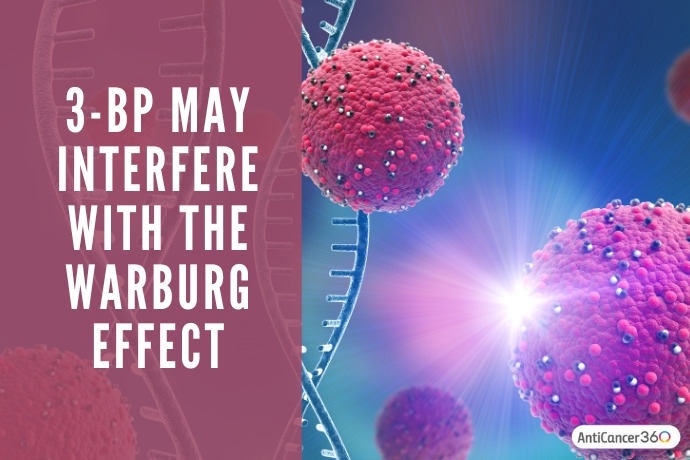
The molecular mechanisms underlying 3-BP’s anticancer effects involve generating reactive oxygen species (ROS) and disrupting critical metabolic pathways. 3-BP disrupts the glycolytic pathway, hindering the conversion of glucose to pyruvate. Additionally, it interferes with the pentose phosphate pathway, which is essential for tumor cell proliferation. Studies have shown that 3-BP treatment leads to cell cycle arrest and induces apoptosis in various cancer cell lines, including breast cancer cell lines (MCF-7 and MDA-MB-231) and colon cancer cell lines (DLD-1) [2],[3],[4].
Anticancer Effects of 3-bromopyruvate on Solid Tumors
3-BP’s effectiveness against solid tumors evidences its potential as a promising chemotherapeutic agent. In preclinical studies, it demonstrated significant inhibitory effects on tumor growth, making it a potential candidate for clinical oncology.
It has shown particular promise in targeting triple-negative breast cancer (TNBC), a highly aggressive and difficult-to-treat subtype. Researchers investigated the effects of 3-bromopyruvate (3-BrPA) on the growth and glucose metabolism of triple-negative breast cancer (TNBC) xenografts in nude mice. TNBC is known for its resistance to treatment, and there is a need for effective drug options. 3-BrPA is a glycolytic inhibitor that has shown promise in inhibiting the proliferation and inducing apoptosis of TNBC cells in vitro. However, its effects on animal models have yet to be well-studied.
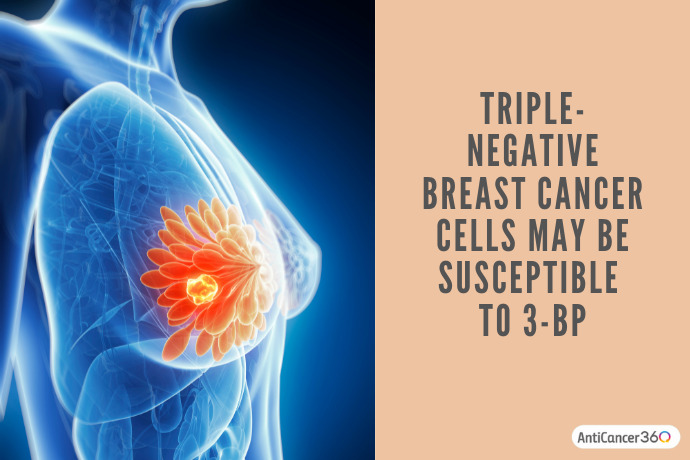
In this study, the researchers constructed subcutaneous xenografts of human TNBC in nude mice and treated them with different concentrations of 3-BrPA. After 15 days, researchers analyzed the tumor tissues within the mice. The results showed that 3-BrPA inhibited the growth of TNBC transplant tumors, decreased hexokinase (HK) activity and adenosine triphosphate (ATP) production in tumor tissues, and disrupted the tissue structure of the tumors. Importantly, 3-BrPA did not significantly damage the liver and kidney tissues of the mice.
Further analysis revealed that 3-BrPA decreased the expression of c-Myc and Bcl-2, increased the expression of Cytc, Bax, and Caspase-9, and promoted apoptosis in the tumor tissues. These findings suggest that 3-BrPA inhibits the growth of TNBC transplant tumors and induces their apoptosis. The mechanism behind this anti-cancer effect may involve reducing HK activity by down-regulating c-Myc expression, leading to decreased glycolytic pathway energy production and promoting apoptosis in the tumors.
Overall, this study provides evidence for the potential therapeutic use of 3-BrPA in TNBC by targeting c-Myc and disrupting glucose metabolism. Further research is warranted to validate these findings and explore the clinical applications of 3-BrPA in TNBC treatment [5].
Enhancement of Cancer Treatments with Adjunct 3-bromopyruvate
In addition to its direct effects on cancer cells, 3-BP has also demonstrated the potential to enhance the efficacy of other cancer treatments. Studies have shown that combining 3-BP with traditional chemotherapy or radiation therapy can lead to synergistic effects, increasing the overall effectiveness of these treatments. This combination approach could potentially improve patient outcomes and reduce the chances of cancer recurrence.
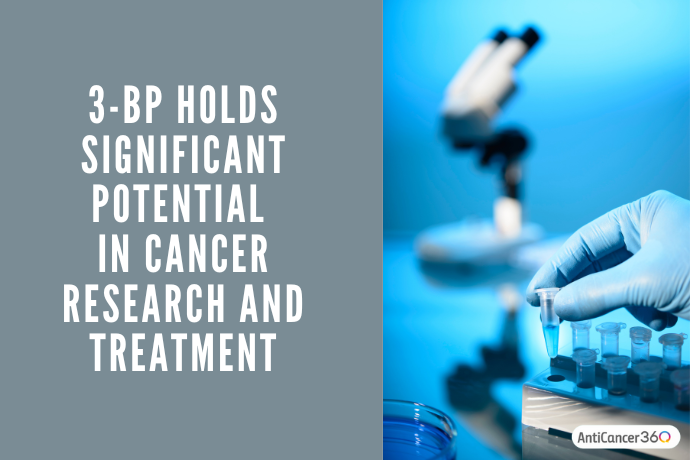
The study investigates the use of 3-Bromopyruvate (3BP), a compound that sensitizes triple-negative breast cancer (TNBC) cells to ionizing radiation. TNBC lacks specific receptors and gene amplification, limiting treatment options. TNBC exhibits elevated glycolysis, providing energy for cell proliferation and DNA repair. Monocarboxylate transporter 1 (MCT1) expression is correlated with an aggressive phenotype in breast cancer. The researchers found that 3BP selectively targets MCT1-expressing TNBC cells, inhibiting glycolysis and inducing metabolic changes. 3BP also reduced the clonogenic survival of TNBC cells and enhanced the cytotoxic effect of radiation. This study suggests that targeting MCT1-mediated metabolic perturbation combined with radiation therapy could be a promising strategy for TNBC treatment [6].
Moreover, 3-BP has shown promising results in overcoming drug resistance, which is a significant challenge in cancer treatment. Cancer cells often develop resistance to chemotherapy drugs, making treatment less effective over time. However, studies have indicated that 3-BP can bypass these resistance mechanisms, making it a potential solution for patients who have become resistant to conventional therapies.
Putting it All Together
Understanding the link between cancer and glycolysis has opened new opportunities for developing targeted therapies. Several promising anti-cancer agents aim to disrupt glycolysis, either by inhibiting specific enzymes or by targeting the glucose transporters. By selectively targeting the metabolic vulnerabilities of cancer cells, these therapies have the potential to be more effective and less toxic than conventional chemotherapeutic agents.
The dysregulation of glycolysis plays a crucial role in cancer metabolism. Exploiting this metabolic reprogramming represents a promising approach for developing novel and more effective treatments for various types of cancer. Further research into the molecular mechanisms of glycolysis in cancer cells will continue to offer valuable insights into the development of targeted therapies.
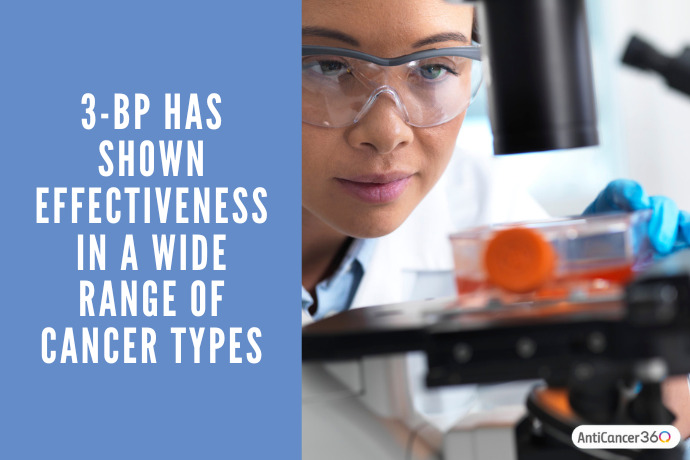
While the potential benefits of 3-BP in cancer research are promising, it’s important to note that further research and clinical trials are needed to fully understand its efficacy and potential side effects. The compound is still in the early stages of development, and its use in human patients is limited.
In conclusion, 3-bromopyruvate holds significant potential in cancer research and treatment. Its ability to target the energy metabolism of cancer cells, induce apoptosis, enhance the effectiveness of other treatments, and overcome drug resistance make it an exciting prospect in the fight against cancer. As further studies and clinical trials unfold, researchers and medical professionals will continue to unveil the true potential of 3-BP, bringing hope to patients around the world.
Ultimately, when using an Aggressive Integrative Approach to cancer, the goal is to fight cancer from every possible direction. This practice includes integrating repurposed medications and natural supplements to fight cancer in an evidence-based, safe way that shouldn’t interfere with your oncology treatment.
How are you approaching your cancer treatment? Are you integrating any natural supplements or strategic dietary approaches? Have you tried any off-label medicines for your cancer? Please feel free to share your experience or feedback in the comments below!
Are You A Good Candidate For AntiCancer360?
If you’d like to learn more about the AntiCancer360 approach and see if we can help you, please watch our free online webinar to learn more. At the end, you’ll be able to schedule a free call with our team so that we can discuss your case in detail.
Dr. Andrew Cox is a graduate of the University of Pittsburgh and is part of the AntiCancer360 team as a consultant pharmacist and medical writer. He received his Bachelor’s degree in Biology from Marist College and a Master of Arts in Cell Biology from Villanova University prior to completing his Doctor of Pharmacy at Pitt. He also completed his Masters of Business Administration from the University of Maine. His expertise helps us create safe herbal and supplement combinations and avoid potential drug interactions.
Andrew has been a licensed pharmacist since 2013 with experience in outpatient retail pharmacy, long term acute care, and managed care pharmacy. He is interested in the appropriate utilization of natural substances to effectively prevent and treat cancer in addition to the traditional treatment strategies. He is also interested in the research and the latest findings of the mechanisms by which various natural compounds affect the tumor microenvironment
In his free time, Andrew enjoys traveling, reading, and the Premier League games on the weekends. He resides in Pittsburgh, Pennsylvania with his wife, daughter, and a boxer mix named, Party Martie.







